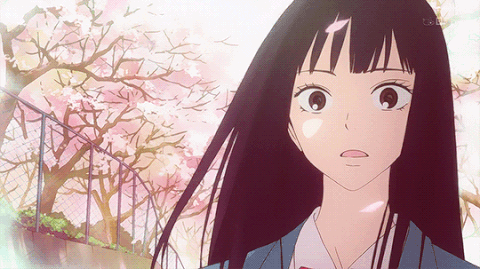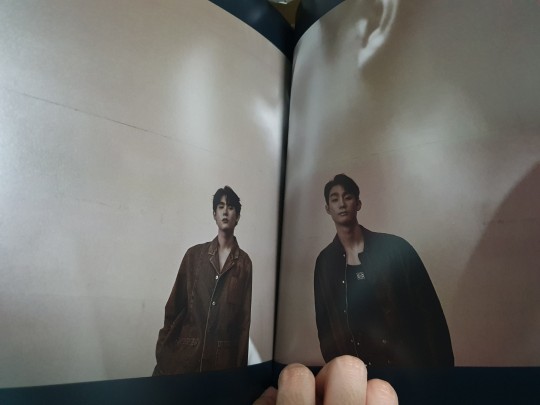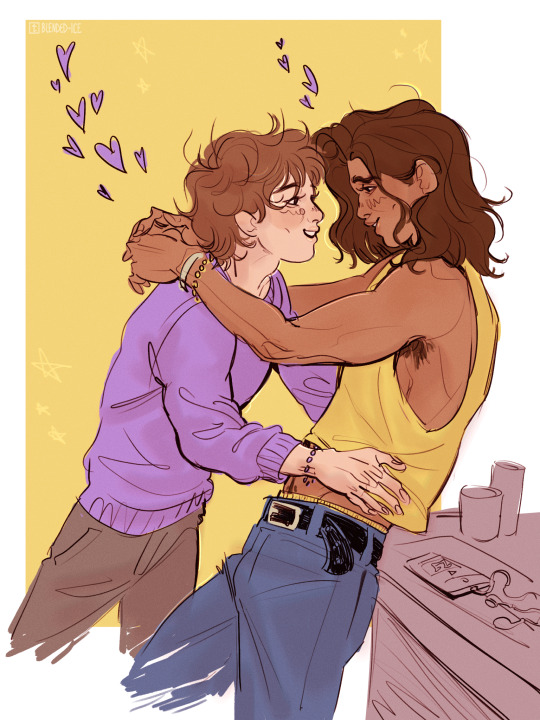#na rambles
Text
i really want my creator friends to know that please! just do your thing! make that gifset! write that fic! do that photoset! create that edit with the song everyone uses in theirs! just do it because i want to look at it! i'll appreciate it! i'll forever be in awe of your talent! it breaks my heart whenever i read your tags or posts about how unconfident you are with your works... because dear Lord, all of you are my inspiration. so, please! don't give up and just make everything you want to make! i'll always root for you! 🥺❤️
#i love you all#please don't be discouraged 🥺#you guys keep the fandom you're in alive#don't lose hope#don't be afraid#i'll support you!#always!#daily encouragement#this is specially dedicated to my creator friends#na rambles
106 notes
·
View notes
Text
I need to draw Team Chris soon,,,
#total drama#team chris is really really really really hot#td noah#td alejandro#td izzy#td owen#td tyler#td duncan#ive been thinking about them recently..#na rambles
27 notes
·
View notes
Text
I am sick and tired of seeing shit takes from people about how characters like Sawako (Kimi ni Todoke) and Miyo (My Happy Marriage) are "unfeminist" because they're shy and soft-spoken. When Miyo is literally that way as a SURVIVAL TACTIC because SHE WAS FUCKING ABUSED And Sawako is showed to have social anxiety and the other kids are shown to kind of bully her. But both girls gain confidence and strength as both series progress. NOT ALL WOMEN HAVE TO BE STONE COLD BADASSES TO BE STRONG!!! Geez…


#Brunette ramblings#Brunette salt#Abuse mention TW#Bullying TW#Shoujo#Shoujo manga#Shoujo anime#Light novels#Kimi ni Todoke#From Me to You#Sawako Kuronuma#My Happy Marriage#Watashi no Shiawae na Kekkon#Miyo Saimori
747 notes
·
View notes
Text
Sure you might be the “love of my life” but have you ever accidentally found out we were both time travelers because of BTS? I don’t think so
#marry my husband#kdrama#fantastic#when#dynamite#started playing#AMAZING#my KDrama rambles#marry my husband spoilers#park min young#na in woo
236 notes
·
View notes
Text
Large shoutout to lil nas x for trying to piss off more and more conservatives with every music video. Truly an unsung hero.
226 notes
·
View notes
Text
Still ducking hilarious to me that Zoro & Sanji began their beef because they thought the other was misogynistic and it came to a head of no return when Zoro felt his title of ‘Luffy’s specialest boi’ threatened by Sanji’s comment
#MY DUDES PLEASE YOU’VE BOTH GOT THAT FEMINIST JUICE FLOWING YES THESE TWO THINGS IDEAS CAN BE TRUE AND EXIST BUT THEN!! BUT THEN!!!!#Zoro takes Sanji’s WE + NEED + HIM (Luffy) SO DUCKING P E R S O NA. L DEADASS STRUCK THE LOUDEST DAMN CORE IN ALL OF ZORO AND RAISED EVERY#DAMN ALARM POSSIBLE#Aaaaaand ‘You just got here /you/ don’t know what Luffy needs’ MY GOOD FIRST MATE OF A MAN C A L M D O W N N N IT IS /NOT/ THAT DEEP#‘I know he needs my cooking’ SANJII NOOOOO DON’T FALL FOR IT#‘Like what putting two slices of bread together’ Oh god. oh no. we are never coming back from this (pure hilarious joyous disaster) Ever!#Roronoa Zoro#Black Leg Sanji#Monkey D. Luffy#One Piece Live Action#OPLA#One Piece#All jokes aside tho Zoro was right to make sure they didn’t go inside to aid their captain#They would’ve been more of a distraction than help because Luffy wouldn’t have been able to let loose as much as he did#Zoro’s a good first mate but also buddy my guy my dude Sanji does NOT want your job bud ain’t nobody want your job especially when Luffy#made it very clear /you/ are worth more to him than /food/#Somebody should tell Zoro that tho man could use the affirmation#But also…my guy…what were you so jealous so hissy so darn quick to b!tch for helpp ☕️🤧💀#Zolu#Ani Rambles#Luzo
155 notes
·
View notes
Text
Finally…………..




Marie Antoinette (Alter) (5* Avenger) final ascension art is so pretty!!!!
#the artist is so good abhhh#fgo#rambling#I will be rolling for her once she hits NA 🗣️🗣️🗣️#still not over the summer ascension art for Casgil ☠️
110 notes
·
View notes
Text
when Pucci infiltrated Jotaro's Time Stop, do you think Jotaro felt the same as DIO when he did the same thing back in Cairo?
#jjba#jojo#jojos bizarre adventure#jojo no kimyou na bouken#jojo's bizarre adventure#jotaro kujo#star platinum#dio brando#enrico pucci#marc rambles#marc posts#stone ocean#jojo part 6#jjba part 6
68 notes
·
View notes
Text

this goes so hard
#my happy marriage#watashi no shiawase na kekkon#YELLING INTO A PILLOW#THEM#ITS ALWAYS BEEN THEM#OUGH SO THIS IS LOVE#*banging my head against the wall*#*banging pots and pans*#IVE BEEN WAITING FOR THIS#the duality of this man#he holds her so gently#will set the place on fire to rescuer her tho#jess rambles#i’m so obsessed w this show
216 notes
·
View notes
Text
i legit cried.










i'm not ok. i'm really not.
103 notes
·
View notes
Text
This new year hasn't been the best (stressed out)
7 notes
·
View notes
Text
35 hour fast while im sick i dont think i can hear color anymore
#thinspø#ed not sheeren#weight loss#pro @na#food things#tw ed diet#pro a4a#soda ramblings#tw disordered eating#@n@ buddy#ana is my friend#helpomg
74 notes
·
View notes
Text
The Fae of the British Lostbelt
This is gonna be a long one, so strap in.
The fae and other creatures of the British Lostbelt take heavy inspiration from real-life legends; almost every major character is named after a type of fairy or mystical creature from British folklore. Many of these names are not English; I've added a pronunciation guide for these in brackets after the word. In this post, I'll go over the beings and concepts these characters are named for and compare the legend to the original. This won't include Morgan or Oberon; those figures are complex enough to deserve posts of their own.
Aesc [ASH]
Aesc is more accurately spelled Æsc. It's an Old English word for the ash tree, and also doubles as the word for the rune for the letter Æ. This is pretty much a direct translation into Old English of Aesc's Japanese name, Tonelico (トネリコ), a word meaning "ash tree".
Albion
Albion is a poetic name for the island of Britain, from Greek Albiōn (Ἀλβίων), the name used by classical geographers to describe an island believed to be Britain. The name probably means "white place", which is how it's connected to the Albion of Fate. The Albion of Fate is the White Dragon, a symbol of the Saxons from a Welsh legend. In the most well-known version of the legend, the King of the Britons at the time, Vortigern, was trying to build a castle on top of a hill in Wales to defend against the invading Saxons, but everything he tried to build collapsed. He was told by his court wizard to find a young boy with no father and sacrifice him atop the hill to alleviate the curse. He sent his soldiers out and found a boy being teased for being fatherless, but when he brought the boy to the hill, the boy, a young Merlin, told him that his court wizard was a fool and that the real reason for the collapsing castle was two dragons inside the hill, one red and one white, locked in battle. The red dragon represented the Britons, and the white dragon represented the Saxons. Merlin told Vortigern that nothing could be built on the hill until the red dragon killed the white one. A red dragon is the symbol of Wales to this day, and a white dragon is occasionally used in Welsh poetry to negatively represent England. This white dragon is Albion in Type/Moon lore.
Baobhan Sìth [bah-VAHN shee]
A baobhan sìth is a female fairy in Scottish folklore. The name literally means "fairy woman" in Scottish Gaelic. They appear as a beautiful woman and seduce hunters traveling late at night so that they can kill and eat them, or drink their blood depending on the story. They're unrelated to banshees except in terms of etymology (Banshee is from Old Irish "ben síde", meaning the same thing as baobhan sìth). They're often depicted with deer hooves instead of feet, which is probably what inspired Baobhan Sìth's love of shoes.
Barghest
In the folklore of Northern England, a barghest is a monstrous black dog with fiery eyes teeth and claws the size of a bear's. The name probably derives from "burh-ghest", or "town-ghost". It was often said to appear as an omen of death, and was followed by the sound of rattling chains. The rattling chains probably inspired Barghest's chains. Her fire powers are also obviously based on the fiery eyes of the barghest. Otherwise, she's not very connected to the folkloric barghest, which is never associated with hunger or eating humans.
Boggart
In English folklore, a boggart is either a malevolent household spirit or a malevolent creature inhabiting a field, a marsh, a hill, a forest clearing, etc. The term is related to the terms bugbear and bogeyman, all originally from Middle English bugge, or possibly Welsh bwg [BOOG] or bwca [BOO-cuh], all words for a goblin-like monster. It usually resembled a satyr. It's not really ever depicted with lion features, so it's anyone's guess why Boggart is a lion-man.
Cernunnos [ker-NOON-ahs]
Cernunnos, probably meaning "horned one", was an important pre-Roman Celtic god. His existence is only attested by fragmentary inscriptions and the repeated motif in Celtic religious art of a "horned god", a humanoid figure with deer antlers seated cross-legged. This fragmentary evidence is often led to assume that Cernunnos was a god of nature, wilderness, animals and fertility. There exists no evidence that Cernunnos was a chief deity of any kind, since we have barely any evidence he existed at all in the first place. Cernunnos might not even be his name; it's just the only name we have. Needless to say, the only thing the Cernunnos in the British Lostbelt has in common with the real figure is his large antlers.
Cnoc na Riabh [kuh-nock-nuh-REE-uh]
Cnoc na Riabh, Knocknarea in English, is a hill in Sligo in Ireland. The name means "hill of the stripes", referring to its striking limestone cliffs. It's said to be the location where Medb's tomb lies, so it's connected to Cnoc na Riabh through Fate's conflation of Medb with Queen Mab, a fairy mentioned in Romeo and Juliet; this etymology of Mab as derived from Medb was formerly accepted, but has lost favour with the advent of modern Celtic studies due to the lack of any concrete connection between the two figures.
Grímr (don't know how to say this one, apologies; Germanic myth is not my strong suit)
Odin (Wōden in Old English) was a god worshiped in many places, basically anywhere the Germanic peoples went, including the Anglo-Saxons that became today's English people. As such a widely worshiped god, he had a very large number of names, titles and epithets. Grímr is one such name, literally meaning "mask", referring to Odin's frequent usage of disguises in myths, which is fitting for how Cú disguised himself as a faerie in the British Lostbelt and hid that he possessed Odin's Divinity from Chaldea.
Habetrot
Habetrot is a figure from Northern England and the Scottish Lowlands, depicted as a disfigured elderly woman who sewed for a living and lived underground with other disfigured spinsters. She often spun wedding gowns for brides. Cloth spun by her was said to have curative and apotropaic properties. All the Habetrot of the British Lostbelt has in common with this figure is the association with brides and with spinning cloth. "Totorot" is not a real figure; the name is just an obvious tweak of Habetrot.
Mélusine
Mélusine is a figure that appears in folklore all across Europe. The name probably derives from Latin "melus", meaning "pleasant". She's a female spirit of water with the body of a beautiful woman from the waist up, and the body of a serpent or a fish from the waist down. In most stories, she falls in love with a human man and bears his children, using magic to conceal her inhuman nature. However, she tells her lover he must never look upon her when she is bathing or giving birth. Of course, he invariably does so, and when he does, he discovers her serpentine lower body, and she leaves, taking their children with her. Since Mélusine is just the name Aurora gave her, the Mélusine of the British Lostbelt has very little to do with this figure, but an analogy can be drawn between the Mélusine of folklore hiding her true form as a half-serpent to maintain her relationship with her lover, and Fate's Mélusine suppressing her true form as both a dragon and an undifferentiated mass of cells to ensure Aurora continues to love her.
Muryan [MUR-yan]
A muryan is a rather obscure Cornish fairy. The word is Cornish for "ant". Muryans are diminutive figures with shapechanging abilities, cursed to grow smaller every time they use those abilities until they eventually vanish altogether. Muryan, of course, is connected to muryans through her ability to shrink others.
Spriggan [SPRID-jan]
A spriggan is a type of creature in Cornish folklore. The word is derived from the Cornish word "spyryjyon" [same pronunciation], the plural of "spyrys", meaning "fairy". They're usually grotesque old men with incredible strength and incredibly malicious dispositions, and are often depicted guarding buried treasure. Spriggan is not himself a faerie, and the name is stolen from a faerie he killed, but it's still appropriate due to the greed and selfishness spriggans are usually depicted with.
Woodwose
Woodwose is a Middle English term for the wild man, a motif in European art comparable to the satyr or faun. The etymology is unclear. It has little to do with wolves or animals, despite its association with wildness, but there is at least a thematic connection with Woodwose's character, since the archetype of the wild man depicts a figure who cannot be civilised or well-mannered no matter how hard he tries, much like how Woodwose barely restrains his temper by being a vegetarian and dressing in a fine suit. Woodwose's predecessor, Wryneck, is named for a type of woodpecker with the ability to rotate its neck almost 180°.
#incoherent rambling#fate grand order#fgo#lostbelt 6#avalon le fae#boggart fate#woodwose fate#habetrot#spriggan fate#muryan#melusine#baobhan sith#cernunnos#barghest#cnoc na riabh#fateposting#if i missed anyone in this post OR in the tags i will jump off a cliff#now it is bedtime#will probably give morgan and oberon their own posts in a few days#school. you know.
308 notes
·
View notes
Text
Marry My Husband. Episode Fourteen.
When she’s trying to help him after coming home from the hospital
And he’s so tall and she’s so tiny and the coat and it’s like she’s an adorable anxious bird flitting around a very tall tree
98 notes
·
View notes
Text
ranking the jojos on how trans they are
Giorno Giovanna: do i even need to explain? the hair change, the name change, life powers, stand coming out of the cocoon more powerful. also bugs and frogs are very trans to me
Josuke Higashigata(8): something something not knowing who you are and finding yourself thru friends and family
Jolyne Cujoh: something about experiencing changes in yourself and also religion
Josuke Higashigata(4): The Prince vibes man
Jotaro Kujo: there is something here but idk what. he was gonna be lower but hes iconic to many transmasc ppl so
Johnny Joestar: something about growing as a person during your journey
Jodio Joestar: "What are you, a cop? I'll kill you"
Joseph Joestar: idk he did drag once to bamboozle nazis
Jonathan Joestar: the Blessed Cis
#jojo no kimyou na bouken#jojos bizarre adventure#jojo's bizarre adventure#jjba#trans#giorno giovanna#josuke higashikata#jolyne cujoh#jotaro kujo#johnny joestar#joseph joestar#jonathan joestar#gappy higashikata#snep rambles
130 notes
·
View notes
Text

thinking about LeoJi 💛💜
#peas n guac#so apparently it’s NOT canon that Leo’s Mexican and NATIVE American#just Mexican american#but he’s part NA to me inside the caverns of my brain#native on his dads side Mexican on his moms#but I have this entire background for him that I’ve just made up in my head and I realized that it wasn’t canon just recently#it’s real to me though 🥺#yuri on ice#yoi#guang hong ji#leo de la iglesia#lion of the church my bb#where’s my content of ji coming to America and meeting Leo’s big ole family#fanart#id in alt text#I feel like ji has a more quiet and distant small family#so I want him to come to America to hang out with Leo and be adopted by his entire family#ok I’ll stop rambling in the tags now
233 notes
·
View notes